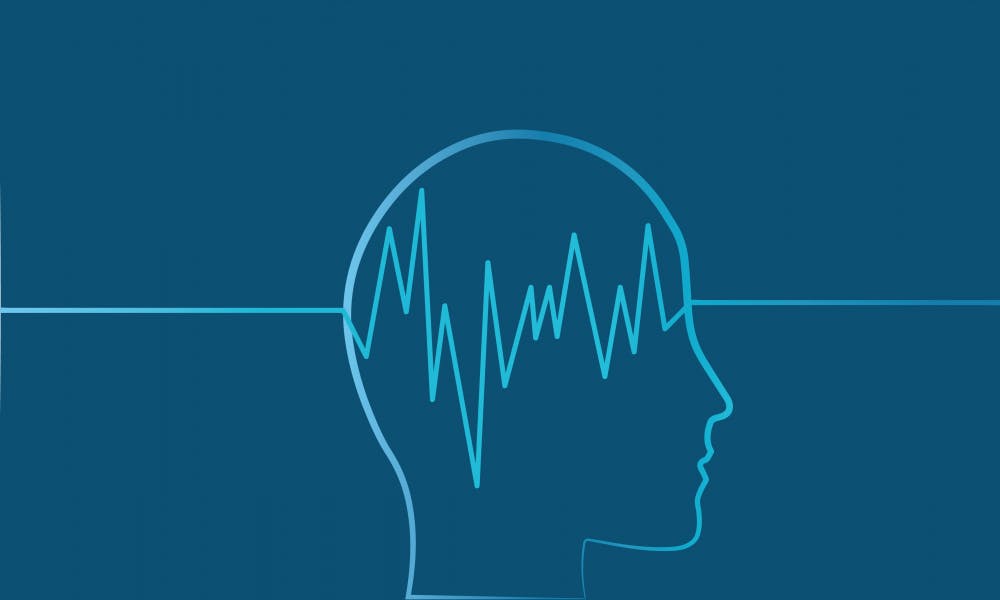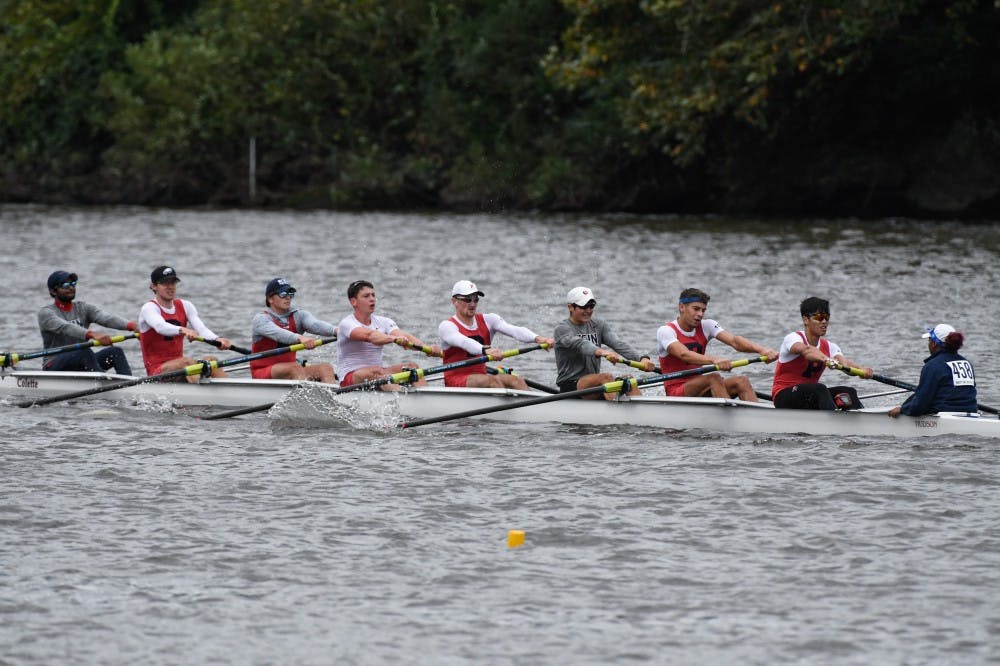
Being an athlete at Penn is difficult. Athletes often have to balance strenuous workouts and practices with rigorous coursework, and they often have difficulty finding time to get involved in other clubs and research on campus.
Don't tell that to sprint football running back Ryan Leone.
In the spring of 2017, Leone took MKTG 351 — Introduction to Brain Science and Business — which was taught by Dr. Michael Platt, an appointed faculty member of the College, Wharton, and the Perelman School of Medicine.
It was through that class that Leone learned about the neuroscience research Platt was doing as part of the Wharton Neuroscience Initiative. Platt's research is centered on the intersection between neuroscience and business — something that highly interested Leone.
Leone founded the Wharton Undergraduate Neuroscience Initiative Society that semester and began working with Platt, post-doctoral candidate Scott Rennie, graduate student Lauren Gaudreau, freshman fencer Lana Prieur, and sophomore lightweight rower Nick Hutchins. He also worked with former NFL player and MBA student Erik Lorig during the fall of 2018. It was through this group of minds that Leone was able to come up with an idea for his senior thesis.
"We were working a lot with Scott last semester, who has done a lot of cool studies related to neuroscience, and it was through him that we came up with an idea to try to help sports teams' performance," Leone said. "Basically, we wanted to look at the physiological synchrony of athletes, and our hypothesis was that increased synchrony would bring about increased performance."
In an effort to begin gathering physiological data of athletes, Leone looked to his sprint football teammates.
"We first tried to use the sprint football team, and we came up with trials where we took three people on the sprint team and watched film of the offense in our locker room," Leone said. "We hooked the players up to devices measuring their brain waves, heart rate, and breathing rate."
Leone was looking to determine whether players involved in a particular play would display similar physiological signals.
"We were trying to see whether a particular play involving a certain number of players causes similar brain wave, heart rate, and breathing rate activity. Being in a team atmosphere, we thought we would see that signals would coincide," Leone said. "The big takeaway was that we could now measure these types of things in non-lab, non-controlled environments."
But they still needed better data. Watching film with sprint football had players in a stable environment where they weren't moving. Leone — under the direction of Lennie — helped organize another experiment that took a different route.
"We wanted to look at a non-stable environment after the sprint football study, so we actually looked at the Terror Behind the Walls [at the Eastern State Penitentiary]," Leone said. "We had a group go through the exhibit and measured their physiological signals. From this one, we saw that, with some difficulty, we could track people's [physiological signals] in a mobile environment, which means we're getting closer and closer to being able to do this in a live sports setting."
For his senior thesis, this semester, Leone wanted to take the final leap and start measuring athletes' physiological signals. He hoped that if these signals were similar between players, then they would perform better.

"My senior thesis is with the lightweight rowing team, which is obviously a sport where people are moving the same way. For four days, we took four rowers aside and hooked them up to devices to measure their brain waves, heart rate, and breathing rate," Leone said. "Then, we had them do different activities with different levels of synchrony. We also gave players surveys to assess how they subjectively felt they were doing in each trial and if they were in their flow state.
"We paired them up and put them into fixed synchrony — where players are put side-by-side on things called sliders that force them to move in the same way, flexible synchrony — where players are side-by-side but not on the sliders, and non-synchrony — where players are put on opposite corners of the room facing away from each other."
In having different degrees of synchrony and collecting data from the rowers and randomizing which trials they do, Leone constructed an experiment that is easily replicable with other sports.
Though the data hasn't been collected yet, Leone hopes that they will be able to draw some worthwhile conclusions from it.
"Hopefully, this data will be in before my senior thesis is due," Leone laughed. "But [the data's] implications are really big. For example, if we found that one condition had high levels of synchrony and performance, we could give the recommendation that they practice more of one style than another. We're hoping that, eventually, we'll be able to look at levels of synchrony in any team and see how it impacts performance."
Though this could have a massive impact on Penn sports teams, Leone also views his senior thesis as something that could help later in his career.
"Next year, I'll be going to King’s College London to study for the Master of Science in War & Psychiatry in the UK, and then I'm going to apply to medical school," Leone said. "I'm hoping to become a physician in the US Army, and I think my senior thesis research could come into play since we'd obviously want to maximize the performance of our troops."
As his senior year comes to a close, Leone — though still busy around the clock — is satisfied with how he's spent his time.
"This is a project that I'm really proud of, and it's a great way to cap off my Penn experience."
The Daily Pennsylvanian is an independent, student-run newspaper. Please consider making a donation to support the coverage that shapes the University. Your generosity ensures a future of strong journalism at Penn.
Donate







